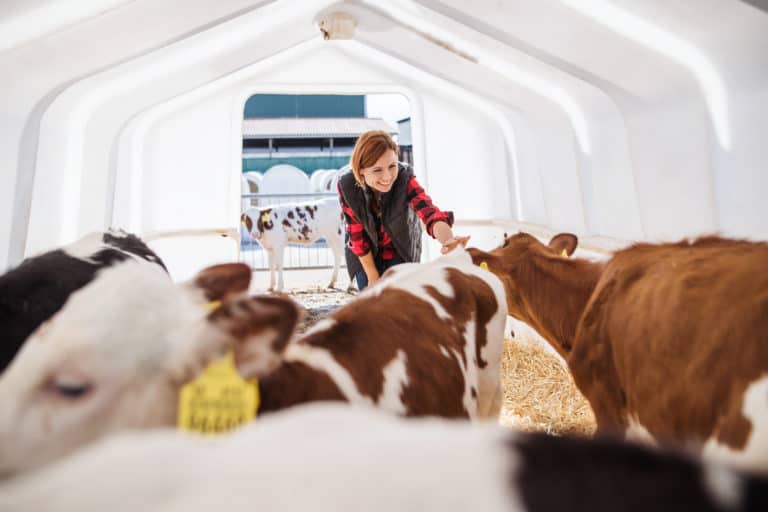So, have you ever heard the phrase “Is It HOT Enough For Ya”? Well let’s begin by saying that June has started off a bit warmer than usual. Let’s ask the question how are your calves feeling and are they staying hydrated in this heat? Are your employees changing their schedules to accommodate cooler feeding times during the day? And when has that been you ask! Well let me say, it has been hot.
Our calves here have definitely been stressed due to the extended heat index. Feeding a bit earlier and a tad later so they are not out and about in the sun, checking on water pails several times during the day and late pm, but I honestly believe it has paid off. If you are protected from the sun and have fans, I can safely say your calves are less effected but still have heat stress related events.
So, how do we help them over come heat stress? First, calves that are less than a week old, you may need to check on them more often and show them how to drink water. For some that is a challenge. Once they figure out how to drink from a pail or bottle on their own you’ve won the battle. But your water must be clean and fresh. Rotating water twice daily if you have pails and/or bottles and if by chance you have auto feeders, monitor water quality in your water fountains.
Remember my article a few months back relating heat stress cows and the effects it has on unborn calves, well now they are on the ground and still effected by long days of summer heat. Some calves may run fevers, please temp your calves and know how warm they are internally. Normal rectal temperature on calves is 102.5. Convulsion can occur on temps over 106. Cooling them down as quickly as possible by tube feeding warm water, running tepid water over their backs and placing ice packs on their knees will help drop internal temperatures quickly. By dropping the temperature too quickly you can induce shock, so that is why using tepid water 65-80° is recommended,
Are you feeding electrolytes? You may not need to supplement electrolytes if they are indeed drinking water however, if you are feeding electrolytes, finding an electrolyte your calves drink is the key. Not all electrolytes are created equal, one that is palatable for your animals is the one I would go with for summer hydration.
If you have hutches, do you turn them away from the sun.. south facing in the winter and north facing in the summer, do you elevate your hutches with cinder blocks or 2×4’s? keeping air flow moving through hutches can be tricky but even moving them under the shade will help.
Remember the normal respiratory rate for calves is 36-60 breaths per minute. Use a stopwatch and evaluate your calves. Watch their breathing rate directly in front of their hips. Look at their eyes, are they alert and bright. Dull eyes are also an indication of dehydration.
I could go on for another hour or so discussing heat stress, but it really is all about hydration, air flow, keeping them dry and well fed through this heat period is critical.
My next blog will be, The dehydrated calf, What to avoid and How to treat.
You can always reach out to me with additional questions.
I can be reached by cell phone 507-259-6534 or my email address: mward@calfstar.com
Sincerely,
Minnie Ward

